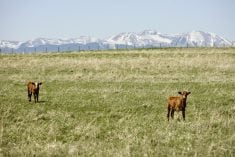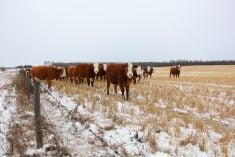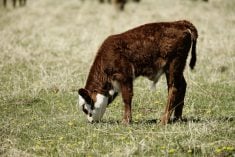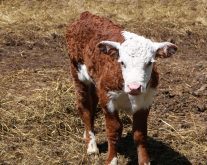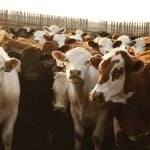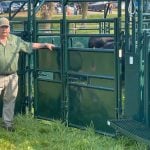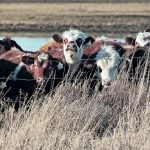Dystocia, a term meaning difficult or prolonged birth, is not as common today as in the past, according to Dr. Jennifer Pearson, assistant professor in bovine health management at the University of Calgary’s faculty of veterinary medicine. But there are still a few problems that require human intervention.
Pearson surveyed producers in Western Canada, asking how many calves they pulled each year, along with other management questions. According to the producers that responded, only about five per cent of calvings were assisted in cows and heifers together. For cows, about three per cent were assisted, and in heifers, it was closer to 13 per cent. The total number of assisted births is lower today, but the number of ranchers that assist at least one calf every year is still greater than 90 per cent.
Read Also
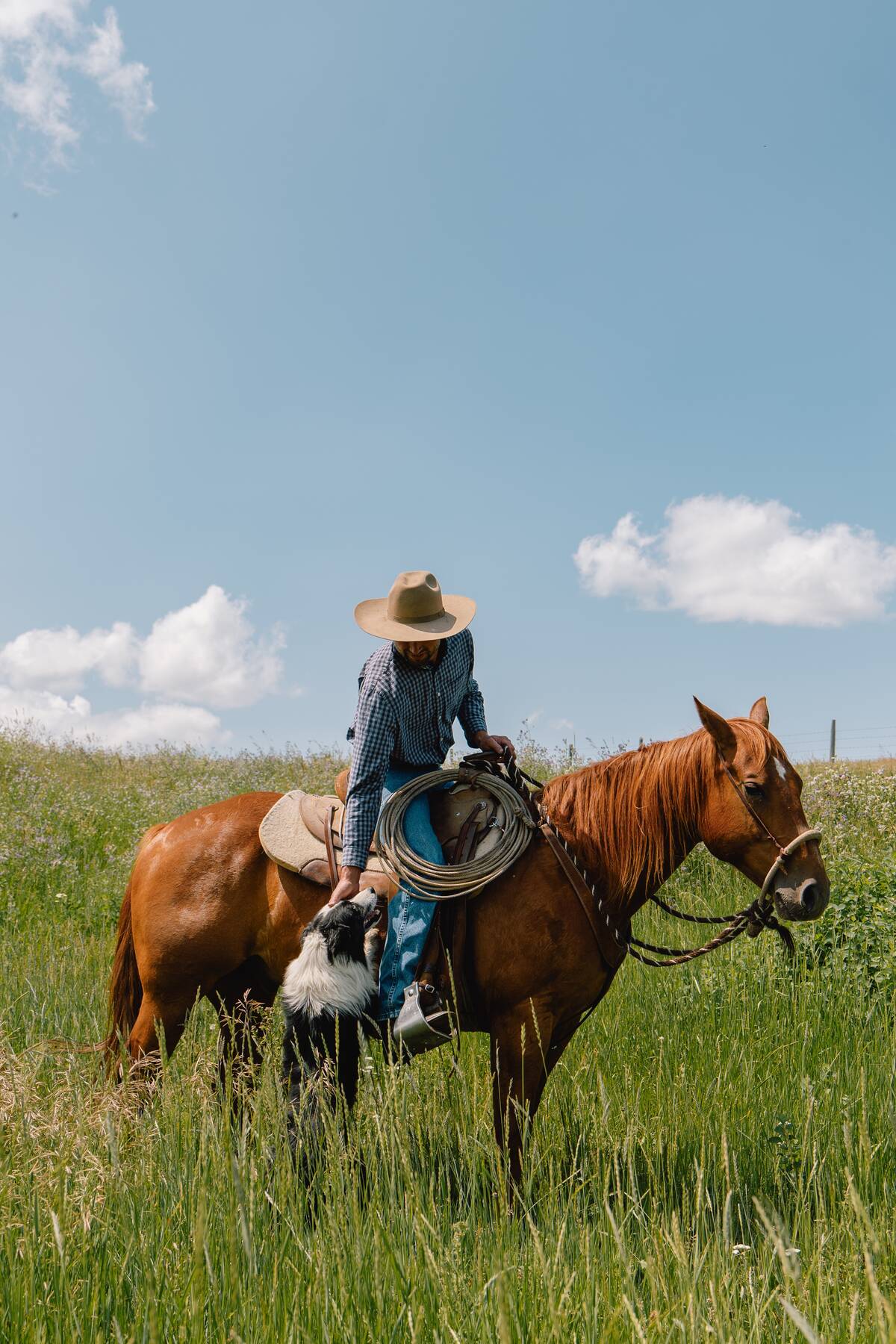
Regenerative ranching sees Alberta family through three decades of ups and downs
Alberta ranchers have found regenerative ranching key to surviving ups and downs of the business
“The calves we have to assist, or the ones that take a long time being born, may experience negative consequences,” says Pearson. They may be weak, injured, oxygen-deprived, tired/dull and less vigorous. They are often slower to get up and suckle, and may not have a good suckle reflex. They might not get adequate colostrum in time to absorb important antibodies and are more vulnerable to disease in the first weeks of life.
Understanding those negative impacts, as well as management strategies to improve the health and well-being of those calves, is important.
Timing is everything
“It is important for producers to make sure the cow is well dilated so they don’t injure her,” Pearson says. Failing to do so can cause tears and injuries that prevent the cow from breeding back again. If the cervix and birth canal are not dilated enough when you begin, be patient and help her dilate more fully.
“The cow or heifer needs assistance if she’s not making obvious progress every 30 to 60 minutes. If you see a water bag and come back 30 to 60 minutes later, you should see feet and a head, or maybe the calf will already be born. But if you come back and there’s still no part of the calf showing, you should check to determine what’s causing the delay,” she says.
Studies in beef cattle several decades ago showed that prolonged birth in heifers results in longer intervals before they rebreed. Assistance at the right time reduces the heifer’s stress and enables her to recover faster.
“Delayed assistance, or no assistance, increases the risk of negative impact on fertility, and for her calf to be born dead or die in utero. We need to know how long she’s been in labour and whether she’s making progress,” says Pearson. It’s important to know when she started second-stage labour (water bag showing or breaking, and active straining).
“Early labour can last quite a while, but the important stage — when the calf starts into the birth canal — should only be about an hour. An older, easy-calving cow may pop the calf out in 15 or 20 minutes, but a heifer may take her full hour or a bit longer. If she’s not making progress every 30 to 60 minutes or you notice an abnormal situation such as the calf coming backward, or just the head and one leg, or two legs and no head, we need to intervene quickly.”
Pulling a calf
“These rules are also important for calf health. If we are pulling the calf and not very clean, we may get manure into its mouth, and accidentally introduce pathogens.” Those pathogens can then get ahead of the antibodies the calf will consume through colostrum, causing infections, says Pearson.
She also gives calving courses to producers to show how to apply chains and pull calves properly, to avoid injuring the calf.
“Make a double half hitch around each leg; the first loop goes above the fetlock joint and the second one around the pastern.” This spreads the pressure over a larger area, with less stress on bones or joints and less risk of fractures, injured joints, or pulling a horn shell off a hoof.

When pulling the calf, she uses a see-saw method, pulling on one leg at a time to advance it a couple of inches and then pulling the other leg. This moves the calf’s shoulders — or hips, if backward — through the birth canal one at a time, easing its movement.
“The other thing that’s important is to only pull when the cow is straining and pushing. If we keep pulling while she is trying to take a break, we may cause trauma to her reproductive tract, and she may not breed back,” says Pearson. Combining her force and your force also makes it easier.
“If the calf is coming in forward position, make sure there are two front legs and a head before you attach chains and pull.” If one leg is back, don’t pull the calf because it will be too wide to come through, and there will be too much force on the calf, she says.
Make sure the two front legs belong to the same calf, in case there are twins. “Run your hand up the inside of one leg to where you can touch the chest and head, and follow it down the other leg, to make sure the chains are on the same calf. Occasionally with twins, a leg of the other calf may enter the birth canal.”
If a calf is coming backwards, make sure you have both hind legs and a tail. Find the tail and make sure it’s not up over the back of the calf, or it will be harder to pull the calf. The calf will be squeezed on the way through, which may injure the cow or break the calf’s tail head.
“When trying to determine whether the calf can be born vaginally versus by C-section, I use the rule of three — making sure there are two front legs and a head or two hind legs and a tail. Then I try to advance the two legs and the head into the birth canal and it may be tight, but if I can run my hand all the way around that calf’s head/body as it is coming into the birth canal, I know it will fit,” she says.
If you can’t force your fingers between the calf’s forehead and the cow’s pelvis, and the calf’s forehead is jammed against the pelvis, that calf will not come through. You will need a C-section.
“The same applies when coming backwards. If I can’t run my hand around the hips as they start through, I know it won’t fit. In either case, call your veterinarian before you try to pull.” If you can make that decision early, before you pull and possibly injure the cow and calf, you are more likely to end up with a live calf.
“If you’ve been trying to deliver a calf for 30 minutes without progress, get help from someone who can help, or call the vet. The longer you try, the more exhausted you will be, the more exhausted the cow will be and the less chance for the calf to be alive by the time it is delivered. Know your limits,” she says.
If you decide to use a calf jack, it’s important to use it properly. This can be a very good tool, especially if you are working alone, or if you need to deliver a backwards calf and pull it out quickly enough at the end, to make sure the head is not in the birth canal too long after the cord breaks or gets pinched off.
Make sure there is room to use it. If the cow is in a stall or barn, make sure her hind end is not close to the wall. If she’s in a headcatch, make sure there is room to let her lie down and have room behind her to work the calf jack. She will usually go down if it’s a hard pull, and you don’t want her stuck in the chute or headcatch.
When using a calf jack, she tells producers to ratchet only when the cow is pushing, just as they would if pulling by hand.
“I also recommend pushing down on the handle of the calf jack, especially once the calf’s head is coming out. This helps bring the calf up and over the cow’s pelvis in an arc,” she says. If you just pull straight out, this doesn’t take advantage of that natural curve and jams up the calf a bit.
“Simply push the handle down and put a little tension on it. Then when the cow starts to push again, take up more with the chains. When she stops, you stop ratcheting and push down again.”
Never pull a calf with a tractor, quad or any other mechanized equipment. “This puts too much force on the cow and calf; you usually end up fracturing backbones or legs in calves, or cow’s pelvises. If extraction requires that much force, the calf should have been delivered by C-section.”
One way to prevent hiplock in a calf coming forward is to rotate the calf after you get the head and front legs out and the ribcage is coming through the birth canal.
“When the hips are just about to come up into contact with the cow’s pelvis, we twist that calf about 45 degrees. This puts the calf’s pelvis diagonal to the cow’s pelvis, so the widest part of the calf will be coming through the widest, longest part of the cow’s pelvis, where there is the most room,” says Pearson.
Know your ABCs
“I tell my students to check for spares and tears. Always check for twins because you can sometimes be surprised,” she says. Even if it’s a big calf, there could be another one, so check before you get the cow up or turn her loose.
“You’d hate to have to call your vet later to have a dead, rotten calf extracted. I also check inside the cow to make sure she doesn’t have any tears in her reproductive tract,” says Pearson. If you had to reposition the calf, a foot or some other part of the calf may scrape and tear the uterine lining, even if you were careful.
On the calf side, make sure it starts breathing. “We check the ABCs — airway, breathing and circulation. One thing producers and veterinarians used to do, that we don’t recommend anymore, was hold the calf up by the hind legs, hanging the calf upside down over a fence or gate, or swinging it around to try to drain fluid out of the airways. Fluid does come out of the calf’s nose and mouth but this is fluid from the stomach, not the trachea. By hanging him upside down, all the weight of the intestines is now pushing against the diaphragm, which makes it even harder for him to breathe.”
Today, veterinarians recommend putting calves in the resuscitation position, upright and resting on the breastbone, rather than flat on one side.
“We pull the hind legs forward so the feet are up by the ears,” says Pearson. This helps keep the calf propped up, resting on the belly and breastbone. Front legs can be straight out in front of the calf or tucked under it. Its head and neck are forward, with nose low to the ground. Fluid in the air passages tends to drain out.
“This position allows both lungs to expand. If the calf is lying flat, there’s too much pressure on the bottom lung to allow it to fill with air. So we put the calf in this upright position, and then check the ABCs.”
Clear the mucus from the nose and mouth. Some producers keep a small suction bulb in a coat pocket to suck out extra fluid and mucus. Then stimulate the calf to take a breath. Many producers use a clean piece of hay or straw to tickle the inside of one nostril. If the calf is conscious, this usually makes it sneeze or cough and take a breath.
“There is another method we can use if this doesn’t work. You can use a small-diameter needle and poke it in the center of the nose. This stimulates the calf to take a deep breath. It may not make him breathe normally but it gets him started. I also do vigorous rubbing, with a towel or straw, all over the calf’s body, to stimulate circulation and help him wake up a little. Check to see if he has a heartbeat,” she says. The calf may be unconscious and unresponsive, but if the heart is still beating, you have a chance to save it.
“Many times, they have a heartbeat but are not breathing, and we can stimulate them to start breathing.”
If there’s no heartbeat, you can try chest compressions, but Pearson says they generally don’t have much luck with that. If there’s no heartbeat, it’s usually too late.
You can give a calf artificial respiration with the calf lying on its side with head and neck extended, to help open the airway and close off the esophagus. Hold the mouth and one nostril shut, and blow into the other nostril. Blow gently until you see the chest rise, then let the air come back out, and blow in another breath, continuing to breathe for the calf until it starts breathing on its own.
“There are some devices available to help give artificial respiration. One is the McCulloch Calf Resuscitator. It has a mask that fits over the nose and mouth, and a syringe to push air in and inflate the lungs. One drawback is that sometimes air goes into the stomach instead of the lungs,” says Pearson.
Make sure the airway is open and the esophagus is closed off, which tends to be the case if the head and neck are extended. If the head is tucked toward the body, the airway is closed off and the esophagus open.
“We’re currently conducting research on other devices to help resuscitate calves. A fourth-year vet student here at UCVM has published a paper on the laryngeal mask airway.”
This was developed for use in humans, by a British anesthesiologist, and has been in use since 1988. Initially designed for use in the operating room, it is also used in emergency settings as a way to keep the airway open with less chance of filling the stomach with air. The tube has a pointy end and a cuff you blow up to seal off the esophagus. This forms a seal around the trachea so that when you bag and provide air, it goes into the trachea.
“We’re doing research on this device with calves and it looks promising. This may be a good tool producers could use when a calf is not breathing,” she says.
“Another important thing if the calf’s environment is cold is to get him warm and dry. If he’s compromised from a difficult birth and oxygen-deprived, he can’t regulate body temperature very well and becomes hypothermic very quickly. Vigorous rubbing and drying the calf and getting him warm will be helpful,” says Pearson.
Colostrum is also crucial, to give the calf energy to keep warm and get going. “If the calf hasn’t gotten up and nursed on his own within four hours, we need to assist and make sure he gets enough good-quality colostrum.”
If the weather is cold, you need to get colostrum into that calf within an hour, or two at the most. If it gets chilled, its suckle reflex diminishes and so does the gut’s ability to absorb antibodies.




